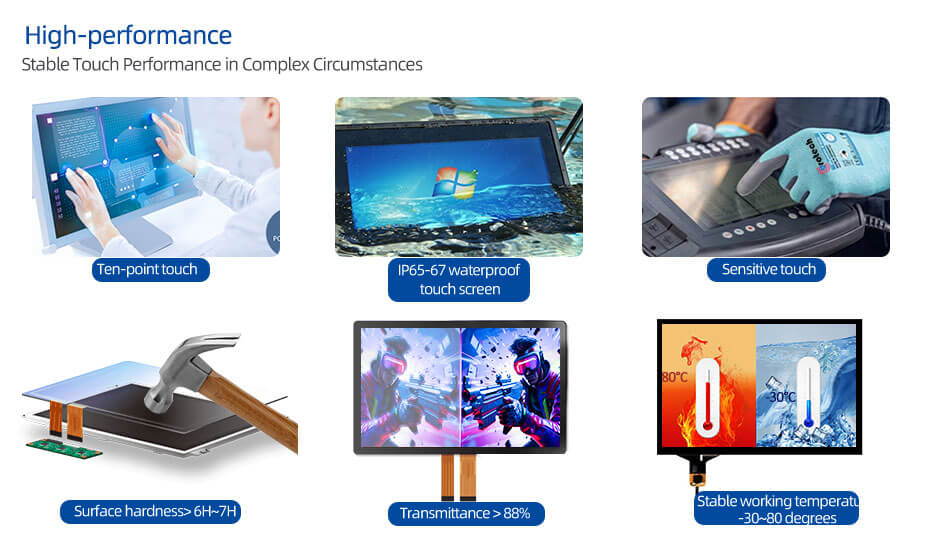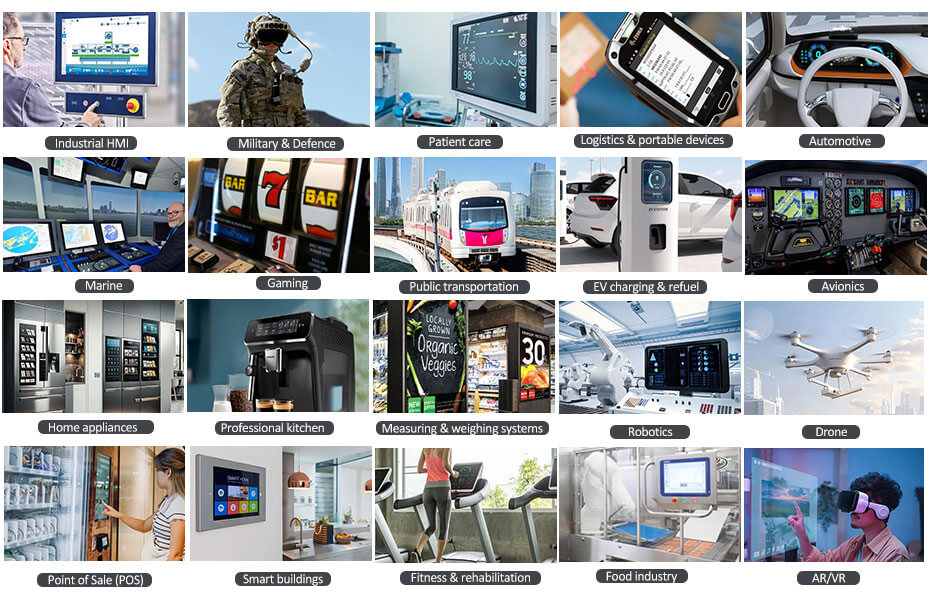Writer: adminRelease Time: 2025-07-11 05:54Browse: 298
Here's a comprehensive analysis of the waterproof requirements for touchscreens and displays, especially relevant for outdoor, industrial, medical, marine, or rugged applications:


Waterproofing is critical for touchscreens and displays used in:
Outdoor environments (kiosks, smart parking meters)
Industrial applications (factory automation, process control)
Medical devices (to allow disinfection and cleaning)
Marine and vehicle systems
Wearable or handheld devices exposed to moisture, rain, sweat, or cleaning agents
Without proper waterproofing, water ingress can lead to:
Short circuits
Display damage (fogging, corrosion)
Touch malfunctions or ghost touches
Reduced lifespan and reliability
The most common classification system:
IP65: Dust-tight, water jets from any direction
IP67: Dust-tight, immersion up to 1 meter for 30 minutes
IP68: Dust-tight, long-term submersion under pressure
IP69K: Protection against high-pressure, high-temperature water jets (ideal for food and pharmaceutical industries)
Similar to IP, but includes corrosion and gasket integrity ratings.
PCAP (Projected Capacitive): Preferred for waterproof use, works through protective glass or plastic, supports multi-touch, and is sealable.
Resistive: Less suited due to membrane vulnerability; water pressure can trigger false touches.
Infrared/SAW: Generally not waterproof and sensitive to water drops.
Bonding the touch sensor to the LCD using an optically clear adhesive (OCA or OCR) eliminates the air gap, reducing moisture ingress and improving visibility in humid conditions.
Gasket sealing (silicone, foam)
O-ring designs for enclosure joints
Overmolded bezels for outdoor kiosks
Fully laminated cover lenses (glass or polycarbonate)
Cover Lens: Waterproof, chemically strengthened glass or waterproof plastics like polycarbonate
Coatings:
Hydrophobic/Oleophobic to repel water and oils
Anti-reflective for outdoor visibility
Waterproof adhesives for laminating display stacks
Water immersion testing
Rain simulation
High-pressure hose spray testing (IP69K)
Salt fog and corrosion tests (marine/industrial)
Thermal cycling and condensation resistance
Maintaining touch sensitivity under wet conditions
Avoiding false touch inputs from water droplets
Condensation between layers if not properly sealed
Balancing waterproofing with thermal dissipation needs
Select PCAP touch panels with glove and water support algorithms
Ensure full bonding and IP67/IP68 sealing for exposed areas
Use venting membranes to equalize pressure while keeping water out
Integrate sunlight-readable LCDs with anti-condensation features for outdoor
Designing a waterproof touchscreen or display requires a multi-layered approach—choosing the right touch technology, sealing methods, materials, and conforming to appropriate IP/NEMA standards. Optical bonding and PCAP technology have made high-performance waterproof displays both feasible and reliable, even in the most demanding environments.
